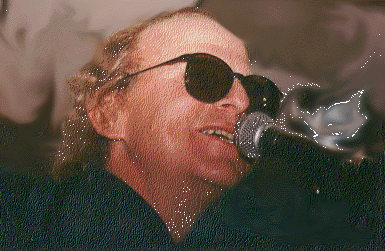
Between the time they recorded the album, and the time it was released, the band had written over a dozen new songs. They had found an inexpensive 8-track studio in Wall township in Monmouth County. At first they used tower studios only for rehearsal, but it was so close to home that they began to record demos there too. In one late night session deep in the grave of the winter of 1981, playing live, with the studio owner, Chris Cavallaro, working the board, they put these new songs to tape.
Raw and drunken, with mikes falling out and strings breaking, these songs nonetheless have a coating of style and energy. They would obviously form the core of the follow-up album.
Generally describing their lives at the point they were at then, the songs leave the satiric impression of a band resigned to being screwed by it's record company. In truth, there were only a few mentions of the recording industry. In the poetic Stephan Crane madness of "I want that girl", they refer to "overachieving salesmen" manipulating the tools of media. In "What have the fascists got to do with rock and roll music" they have Hilly asking them that question. Perhaps the most direct slap at Handshake comes in "waiting for nothing", where Gelb asks " if you can't make a living in rock music business, how come all those junkies drive german cars?"
But there were many other things happening here. Dave and Gary's "odd man out", with it's ringing byrds' guitar part and vocal harmonies was about an ivy league professor who published a paper "the genesis of the bi-cameral mind" that stated human-kind was sychzophrenic until the end of the first millenium. Not your usual rock and roll fare."Red-headed sonny" was a nursery rythme about Gary's big orange cat. "The Jazz age gives way to the thirties" was a strange comparision of the twenties and the seventies. "Short song", barely a minute long,told the quick story of a failed high school romance. It's chorus, "They said to write a short song", was a vieled complaint about the butchering of "Jerusalem" on the first album. Live, they would later stretch this song out with long instrumentals and repeated bridges to a length of five six minutes, further emphasizing the irony.
For "looking for a look", they returned to Richie's do-wop roots for a comment on the shallowness of the New York new-wave scene, (which either ignored them or viewed them as drunken hill-billies.) It's bridge " and all eyes face east as bethlehem's beast slouches it's way to be born. I wait on the beach well within reach of the lightning that powers the storm" is a perfect example of the apocolyptic imagery (started back with "Jerusalem") that was beginning to dominate Applegate's writing. ("Songs about death and destruction" Gelb called them.)
A problem arose when the album was released and the clams were sent out to support it. Word filtered back to Handshake and Hilly that the band wasn't playing many songs from the album. They had all ready moved on. With the exception of the Album release party at CBGB, and possibly a gig or in the following couple of days, the band never played more than four or five Album songs a night, if that. For Hilly it was an old problem. When he had been pitching the tapes to Handshake he invited Alexenberg down to hear the band live. For some reason, he didn't tell the clams; either Ron had asked him not to, or he was afraid it would make them nervous. When Ron showed up the band came out shirtless, with Richie fake playing Dave's unplugged back-up guitar, and played all new material that Ron or even Hilly had never heard before. Ron eventually signed them anyway.
There were eleven songs on most versions of the "ten song tape". Richie's friend Charlie Levinson,who had equipment to copy tapes began calling it that and writing that name on the labels. He also added the demo of "Show Business", recorded before the album, because it seemed to fit the general attitude of the rest of the music. The clams would later record several of the songs under more perfect studio conditions (several versions of "I want that girl" exist), but it's hard to say the more polished studio versions are better than the original raw live versions. Certainly it's safe to say that those songs would have formed a strong core of material for a follow-up to "the Pet Clams".